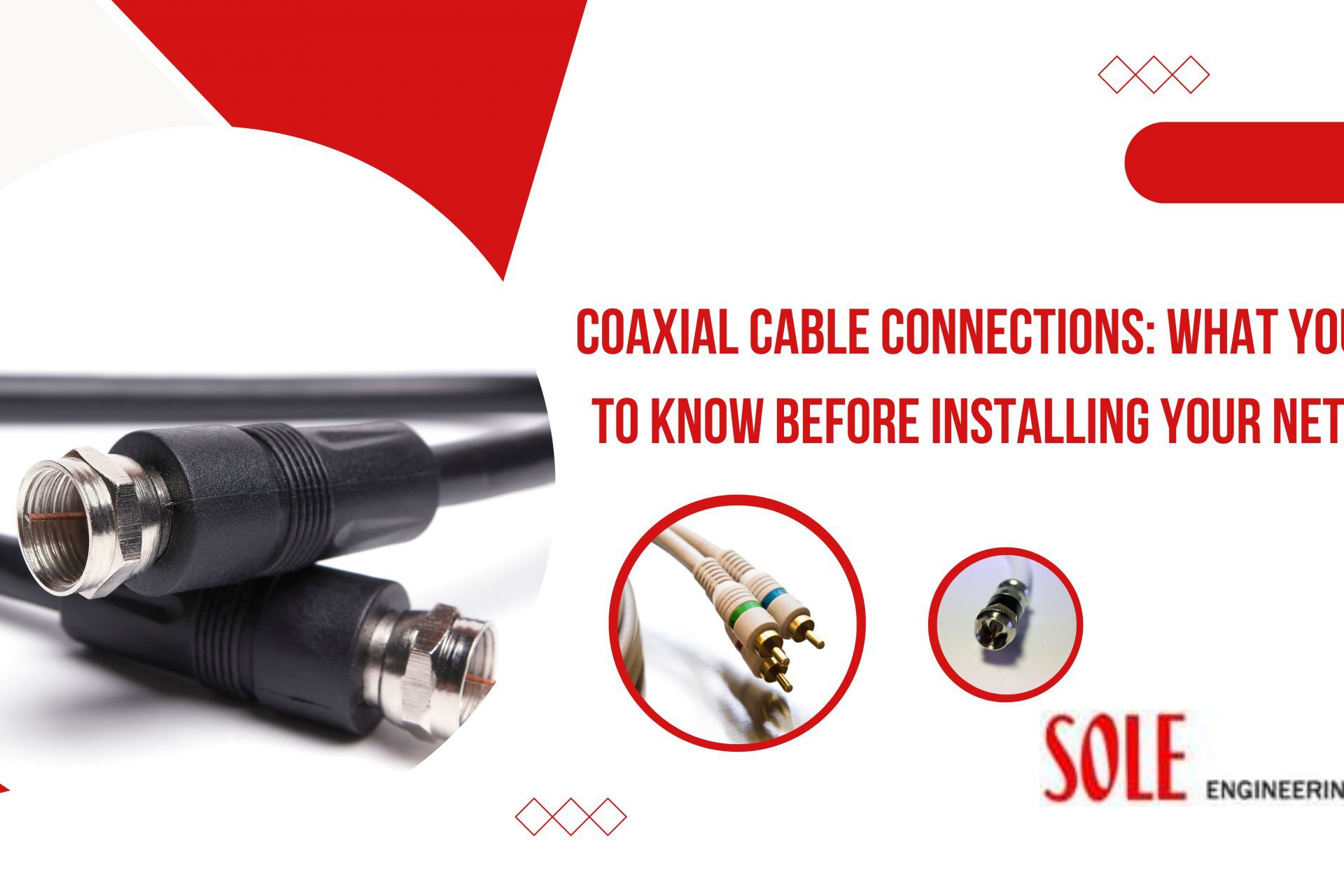When it comes to setting up a reliable and efficient network, understanding coaxial cable connections is essential. Coaxial cables are widely used for transmitting data, video, and audio signals in various applications, including telecommunications, television broadcasting, and computer networks. In this blog post, we will delve into the key aspects of coaxial cable connections that you need to know before installing your network. With the expertise of Sole Engineering, a leading provider of networking solutions, you’ll gain the knowledge and insights necessary to ensure a successful and seamless network installation.
Understanding Coaxial Cables:
- Coaxial cables consist of a central conductor, an insulating layer, a metallic shield, and an outer insulating layer. The design of coaxial cables enables them to carry high-frequency signals with minimal interference. Understanding the different components of coaxial cables, such as the conductor material, shielding types, and impedance ratings, is crucial for selecting the right cables for your network installation. Sole Engineering offers a wide range of high-quality coaxial cables suitable for various applications and requirements.
Types of Coaxial Cable Connectors :
- Coaxial cable connectors play a vital role in establishing secure and reliable connections between cables and devices. There are several common types of coaxial cable connectors, including BNC (Bayonet Neill-Concelman), F-type, and N-type connectors. Each connector type has its specific applications and features. It is essential to select the appropriate connector based on the cable type, device compatibility, and intended use. Sole Engineering provides a comprehensive selection of coaxial cable connectors to ensure compatibility and optimal performance for your network setup.
Best Practices for Coaxial Cable Installation:
- Proper installation techniques are crucial for achieving optimal performance and minimizing signal loss in coaxial cable connections. Before installing your network, it is essential to plan the cable routing, avoid sharp bends, and maintain appropriate cable lengths. Additionally, ensuring proper grounding and using high-quality connectors and tools are key factors in achieving reliable connections. Sole Engineering offers expert guidance and professional advice on the best practices for coaxial cable installation, ensuring that your network setup is efficient and durable.
Troubleshooting Coaxial Cable Issues:
- Even with careful installation, coaxial cable connections may encounter issues such as signal loss, interference, or poor picture quality. Understanding common troubleshooting techniques can help identify and resolve these issues effectively. Sole Engineering’s experienced technicians can assist you in diagnosing and troubleshooting any coaxial cable problems, ensuring that your network operates smoothly and meets your expectations.
Future-Proofing Your Network :
5. As technology evolves, future-proofing your network becomes crucial to accommodate increasing data demands. Sole Engineering provides innovative solutions and recommendations to future-proof your network infrastructure. By considering factors such as cable specifications, compatibility with emerging technologies, and scalability options, Sole Engineering helps ensure that your network can adapt to future requirements without major infrastructure overhauls.


